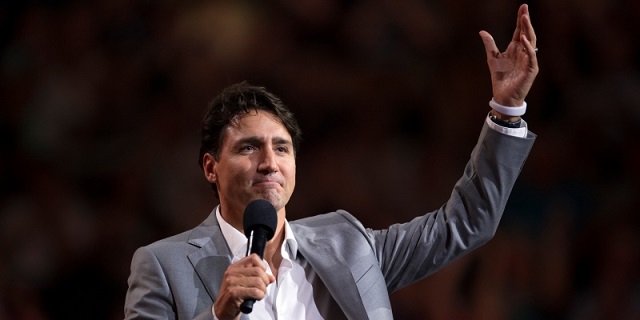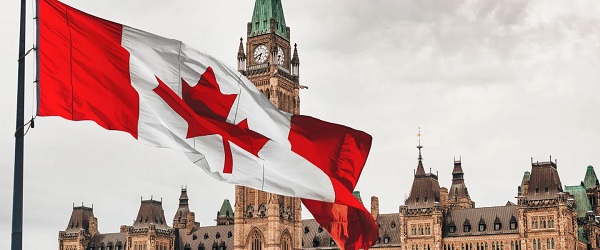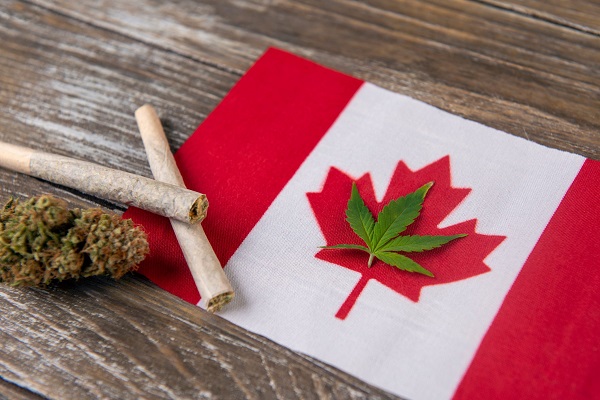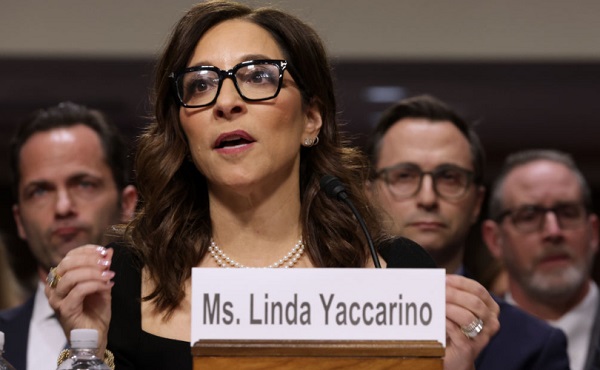Fraser Institute
Canadians should decide what to do with their money—not politicians and bureaucrats

From the Fraser Institute
By Jake Fuss and Grady Munro
Since taking office in 2015, the Trudeau government has expanded the federal government’s role in making decisions for individuals and families, rather than letting Canadians decide on their own. And with its latest federal budget, which it tabled last week, it once again decided that politicians and bureaucrats should determine what people want and need, rather than the people themselves.
Indeed, during its tenure the Trudeau government has introduced a slew of new programs (e.g. national dental care, $10-a-day day care), which have contributed to an expected $227.4 billion increase in annual federal program spending (total spending minus debt interest costs) from 2014/15 to 2024/25. And according to the budget, due to new programs such as national pharmacare, annual program spending will increase by another $58.4 billion by 2028/29.
In many cases the impetus for these new programs has been to increase people’s access to certain goods and services (most of which were already provided privately). But the Trudeau government has consistently ignored the fact that there are always two ways for the government to help provide a good or service—tax and spend to directly provide it, or lower taxes and leave more money in people’s pockets so they can make their own decisions—and instead simply opted for more government.
Consequently, Canadians now pay higher taxes. In 2014/15 (the year before Prime Minister Trudeau was elected), total federal revenues represented 14.0 per cent of the economy (as measured by GDP) compared to 16.6 per cent in 2024/25—meaning taxes have grown faster than the economy.
More specifically, the total tax bill (including income taxes, sales taxes, property taxes and more) of the average Canadian family has increased from 44.7 per cent of its income in 2015 to 46.1 per cent in 2023. That means the average family must work five extra days to pay off the additional tax burden.
And families are feeling the burden. According to polling data, 74 per cent of Canadians believe the average family is overtaxed. And while the Trudeau government did introduce tax changes in 2016 for middle-income families, research shows that 86 per cent of these families ended up paying higher taxes as a result. Why? Because while the government reduced the second-lowest federal personal income tax rate from 22.0 to 20.5 per cent, it simultaneously eliminated several tax credits, which effectively raised taxes on families that previously claimed these credits.
Finally, many Canadians don’t believe their tax dollars are being put to good use. When polled, only 16 per cent of Canadians said they receive good or great value for their tax dollars while 44 per cent said they receive poor or very poor value.
Simply put, the Trudeau government has consistently empowered politicians and bureaucrats to decide how Canadians should use their hard-earned money, rather than allowing individuals and families to make those decisions. With its 2024 budget, once again the Trudeau government has demonstrated its belief that it knows best.
Authors:
Business
Carney government should recognize that private sector drives Canada’s economy

From the Fraser Institute
An important lesson of the Justin Trudeau era is that economic prosperity cannot be built on the back of an expanding government sector, higher deficits and ever-greater political tinkering with the economy. It’s time for something different.
At the half-way point of what’s shaping up to be a turbulent 2025, how is Canada’s economy faring?
By any measure, the past six months have been a bumpy ride. The Canadian economy lost momentum over much of last year, with economic growth cooling, job creation slowing, and the unemployment rate creeping higher. Then as 2025 began came the shock of Donald Trump’s tariffs and—more recently—the outbreak of increased military conflict in the Middle East.
Amid these developments, indices of global policy and business uncertainty have risen sharply. This creates a difficult backdrop for Canadian businesses and for the re-elected Liberal government led by Prime Minister Carney.
Economic growth in the first quarter of 2025 received a temporary boost from surging cross-border trade as companies in both Canada and the United States sought to “front-run” the risk of tariffs by increasing purchases of manufactured and semi-finished goods and building up inventories. But trade flows are now diminishing as higher U.S. and Canadian tariffs come into effect in some sectors and are threatened in others. Meanwhile, consumer confidence has plunged, household spending has softened, housing markets across most of Canada are in a funk, and companies are pausing investments until there’s greater clarity on the future of the Canada-U.S. trade relationship.
Some forecasters believe a recession will unfold over the second and third quarters of 2025, as the Canadian economy absorbs a mix of internal and external blows, before rebounding modestly in 2026. For this year, average economic growth (after inflation) is unlikely to exceed 1 per cent, down from 1.6 per cent in 2024. The unemployment rate is expected to tick higher over the next 12-18 months. Housing starts are on track to drop, notwithstanding a rhetorical political commitment to boost housing supply in Ottawa and several provincial capitals. And business investment is poised to decline further or—at best—remain flat, continuing the pattern seen throughout the Trudeau era. Even this underwhelming forecast is premised on the assumption that ongoing trade tensions with the U.S. don’t spiral out of control.
How should Canadian policymakers respond to this unsettled economic picture? We do not face a hit to the economy remotely equivalent to that generated by the COVID pandemic in 2020-21, so there’s no argument for additional deficit-financed spending by governments—particularly when public debt already has been on a tear.
For the Carney government, the top priority must be to lessen uncertainty around Canada-U.S. trade and mitigate the threat of sweeping tariffs as quickly as possible. Until this is accomplished, the economic outlook will remain dire.
A second priority is to improve the “hosting conditions” for business growth in Canada after almost a decade of stagnant living standards and chronically weak private-sector investment. This will require significant reforms to current taxation, regulatory and project assessment policies aimed at making Canada a more attractive location for companies, investors and entrepreneurs.
An important lesson of the Justin Trudeau era is that economic prosperity cannot be built on the back of an expanding government sector, higher deficits and ever-greater political tinkering with the economy. It’s time for something different.
Policymakers must recognize that Canada is a largely market-based economy where the private sector rather than government is responsible for the bulk of production, employment, investment, innovation and exports. This insight should inform the design and delivery of economic policymaking going forward.
Automotive
Federal government should swiftly axe foolish EV mandate

From the Fraser Institute
Two recent events exemplify the fundamental irrationality that is Canada’s electric vehicle (EV) policy.
First, the Carney government re-committed to Justin Trudeau’s EV transition mandate that by 2035 all (that’s 100 per cent) of new car sales in Canada consist of “zero emission vehicles” including battery EVs, plug-in hybrid EVs and fuel-cell powered vehicles (which are virtually non-existent in today’s market). This policy has been a foolish idea since inception. The mass of car-buyers in Canada showed little desire to buy them in 2022, when the government announced the plan, and they still don’t want them.
Second, President Trump’s “Big Beautiful” budget bill has slashed taxpayer subsidies for buying new and used EVs, ended federal support for EV charging stations, and limited the ability of states to use fuel standards to force EVs onto the sales lot. Of course, Canada should not craft policy to simply match U.S. policy, but in light of policy changes south of the border Canadian policymakers would be wise to give their own EV policies a rethink.
And in this case, a rethink—that is, scrapping Ottawa’s mandate—would only benefit most Canadians. Indeed, most Canadians disapprove of the mandate; most do not want to buy EVs; most can’t afford to buy EVs (which are more expensive than traditional internal combustion vehicles and more expensive to insure and repair); and if they do manage to swing the cost of an EV, most will likely find it difficult to find public charging stations.
Also, consider this. Globally, the mining sector likely lacks the ability to keep up with the supply of metals needed to produce EVs and satisfy government mandates like we have in Canada, potentially further driving up production costs and ultimately sticker prices.
Finally, if you’re worried about losing the climate and environmental benefits of an EV transition, you should, well, not worry that much. The benefits of vehicle electrification for climate/environmental risk reduction have been oversold. In some circumstances EVs can help reduce GHG emissions—in others, they can make them worse. It depends on the fuel used to generate electricity used to charge them. And EVs have environmental negatives of their own—their fancy tires cause a lot of fine particulate pollution, one of the more harmful types of air pollution that can affect our health. And when they burst into flames (which they do with disturbing regularity) they spew toxic metals and plastics into the air with abandon.
So, to sum up in point form. Prime Minister Carney’s government has re-upped its commitment to the Trudeau-era 2035 EV mandate even while Canadians have shown for years that most don’t want to buy them. EVs don’t provide meaningful environmental benefits. They represent the worst of public policy (picking winning or losing technologies in mass markets). They are unjust (tax-robbing people who can’t afford them to subsidize those who can). And taxpayer-funded “investments” in EVs and EV-battery technology will likely be wasted in light of the diminishing U.S. market for Canadian EV tech.
If ever there was a policy so justifiably axed on its failed merits, it’s Ottawa’s EV mandate. Hopefully, the pragmatists we’ve heard much about since Carney’s election victory will acknowledge EV reality.
-

 Also Interesting2 days ago
Also Interesting2 days ago9 Things You Should Know About PK/PD in Drug Research
-

 Business2 days ago
Business2 days ago‘Experts’ Warned Free Markets Would Ruin Argentina — Looks Like They Were Dead Wrong
-

 Business2 days ago
Business2 days agoCannabis Legalization Is Starting to Look Like a Really Dumb Idea
-

 Bruce Dowbiggin1 day ago
Bruce Dowbiggin1 day agoThe Covid 19 Disaster: When Do We Get The Apologies?
-

 Business2 days ago
Business2 days agoWEF-linked Linda Yaccarino to step down as CEO of X
-

 Business1 day ago
Business1 day agoCarney government should recognize that private sector drives Canada’s economy
-

 Media1 day ago
Media1 day agoCBC journalist quits, accuses outlet of anti-Conservative bias and censorship
-

 Automotive2 days ago
Automotive2 days agoAmerica’s EV Industry Must Now Compete On A Level Playing Field








